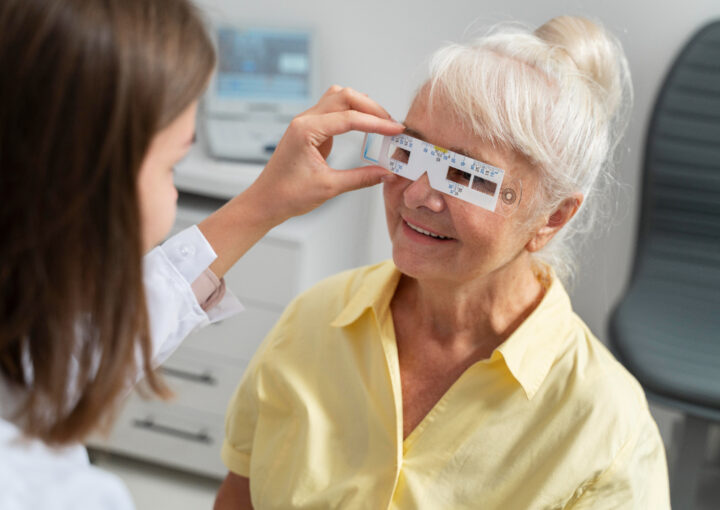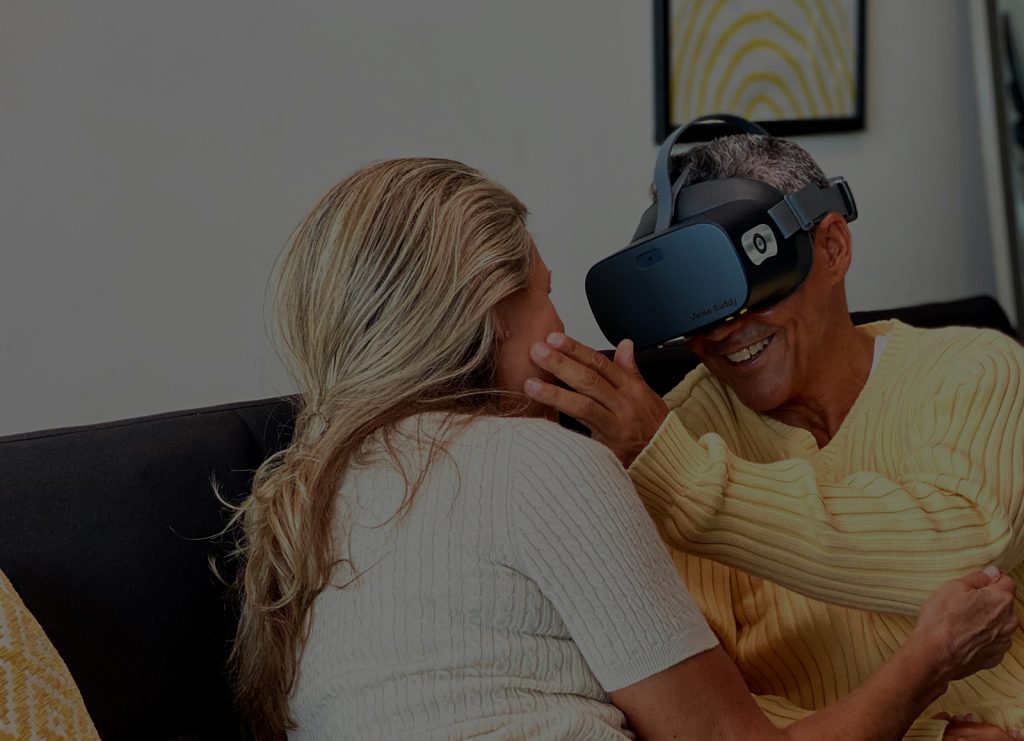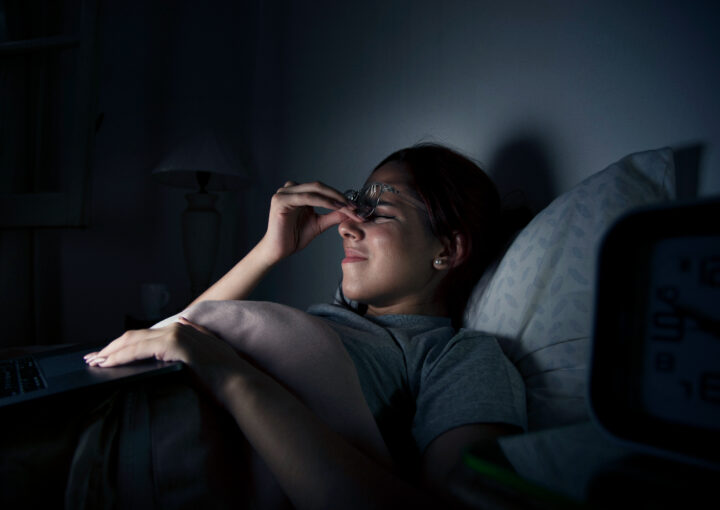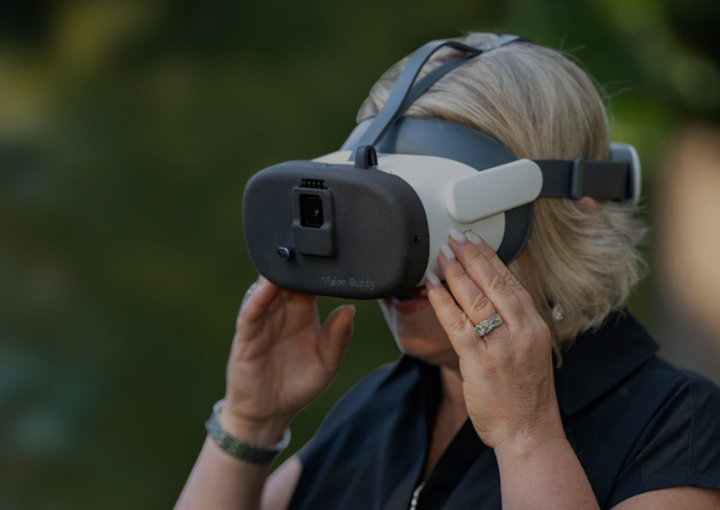
Vision Buddy – Wearable Glasses for Legally Blind


Maya Williams
Low vision is a significant visual impairment that cannot be fully corrected with glasses, contact lenses, or surgery.
Affecting millions worldwide, this condition limits a person’s ability to perform daily activities such as reading, writing, or recognizing faces. In the United States alone, over 4 million adults are visually impaired, with low vision being a primary contributor. This comprehensive guide will explore everything you need to know about low vision, from its definition and types to its causes, symptoms, diagnosis, and treatment options.
We’ll also touch on assistive technologies like wearable devices, visual rehabilitation, and how people with low vision can live fulfilling lives.
What is Low Vision?
Low vision refers to a visual impairment where a person’s visual acuity or field of vision is significantly reduced, making it challenging to perform everyday tasks. Unlike total blindness, people with low vision still retain some level of sight, albeit limited.
According to the National Eye Institute (NEI), low vision is defined as having a visual acuity of 20/70 or worse in the better-seeing eye, even with corrective measures.
Globally, over 250 million people experience visual impairment, with conditions like Age-Related Macular Degeneration (AMD), glaucoma, and diabetic retinopathy being common causes.
What Happens in Low Vision Eye Conditions?
When someone has low vision, it’s because parts of their eye, like the optic nerve or retina, aren’t working as well as they should. This can make it hard to see clearly. People with low vision often find that their vision is blurry or unclear. It’s like looking through a foggy window or trying to read a faded text.
Seeing in dim light becomes tougher, and distinguishing between different shades and contrasts is challenging. Everyday tasks that others might take for granted, such as reading small print in a book, recognizing a friend’s face, or even driving, can become difficult to manage.
A low vision eye specialist can help by offering treatments and tools designed to make the most of the remaining vision. These solutions can make daily life a bit easier, despite the blur and uncertainty of low vision.
What Are the Types of Low Vision?
Low vision manifests in several forms, depending on the underlying eye condition:
- Central Vision Loss: Difficulty seeing objects directly in front, often caused by AMD.
- Peripheral Vision Loss: Trouble seeing objects to the side, common in glaucoma.
- Night Blindness: Poor vision in low-light conditions, often linked to retinitis pigmentosa or vitamin A deficiency.
- Blurry or Hazy Vision: Everything appears out of focus, commonly caused by cataracts or diabetic retinopathy.
Central Vision Loss
Central vision loss is characterized by the inability to see objects directly in front of you, even though peripheral vision remains intact. This condition is most commonly associated with Age-Related Macular Degeneration (AMD), which affects the macula, the part of the retina responsible for sharp, central vision. Individuals with this type of low vision may struggle to read, recognize faces, or focus on fine details.
Peripheral Vision Loss
Peripheral vision loss, also known as tunnel vision, occurs when the outer edges of the visual field are affected. This condition is often caused by glaucoma, where increased pressure in the eye damages the optic nerve, or retinitis pigmentosa, a genetic disorder that narrows the field of vision over time. Individuals with this type of vision loss may find it difficult to navigate in crowded areas or detect objects at their sides.
Night Blindness
Night blindness, or nyctalopia, refers to the inability to see clearly in low-light conditions. It is often a symptom of underlying conditions like retinitis pigmentosa, vitamin A deficiency, or cataracts. This type of vision impairment makes driving at night, walking in dimly lit areas, or adjusting to changes in brightness extremely challenging.
Blurry or Hazy Vision
Blurry or hazy vision occurs when everything appears out of focus or clouded, regardless of distance. This condition can result from cataracts, where the eye’s natural lens becomes cloudy, or diabetic retinopathy, which damages the blood vessels in the retina. People with this condition may have difficulty reading, writing, or distinguishing objects clearly.
What Are the Symptoms of Low Vision?
- Persistent blurred vision or loss of sharpness.
- Difficulty seeing in dim or bright lighting.
- Trouble recognizing faces or reading small text.
- Reduced contrast sensitivity, making objects blend into the background.
- Loss of visual field, such as peripheral or central vision.
How Is Low Vision Diagnosed?
A low vision eye specialist or ophthalmologist uses specialized tests to evaluate a person’s vision. Common diagnostic methods include:
- Visual Acuity Tests: Measures clarity of vision using an eye chart.
- Field of Vision Tests: Determines the extent of peripheral vision loss.
- Optic Nerve Imaging: Assesses damage to the optic nerve or retina.
- Contrast Sensitivity Tests: Measures the ability to distinguish between different shades of light and dark.
- Pachymetry: Evaluates corneal thickness to detect underlying issues.
How Will an Eye Doctor Check for Your Low Vision?
An eye specialist or low vision eye specialist will use various tests to assess the extent of your visual impairment. The process includes:
- Comprehensive Eye Exam: Evaluates overall eye health and determines potential causes of low vision.
- Visual Acuity Test: Measures how well you can see letters or symbols on an eye chart at a specific distance.
- Visual Field Test: Identifies any gaps or loss in your peripheral vision.
- Contrast Sensitivity Test: Evaluates how well you can differentiate between light and dark objects.
- Optical Coherence Tomography (OCT): Provides detailed imaging of the retina and optic nerve to detect abnormalities.
The doctor may also review your medical history and inquire about difficulties in daily activities to tailor their recommendations.
What Is a Low Vision Eye Test?
A low vision eye test is designed to assess the extent of visual impairment and identify the best tools or strategies to optimize remaining vision. Unlike standard vision tests, this evaluation focuses on functional vision—how well you can perform everyday tasks like reading, identifying faces, or navigating spaces. Specialized equipment such as magnifiers, filters, and electronic devices may be used during the test to determine which assistive tools are most effective for you.
What Causes Vision Impairment?
Low vision can result from a variety of eye conditions or systemic health issues, such as:
- Age-Related Macular Degeneration (AMD): The leading cause of central vision loss in older adults.
- Glaucoma: Damages the optic nerve due to increased pressure in the eye.
- Diabetic Retinopathy: A complication of diabetes that affects the retina.
- Cataracts: Clouding of the eye’s lens, leading to hazy or blurry vision.
- Retinitis Pigmentosa: A genetic disorder that progressively affects night and peripheral vision.
Can Low Vision Be Corrected?
Low vision, a significant visual impairment that isn’t fully correctable with standard glasses, contact lenses, or surgery, can be a challenging condition to navigate. Things might appear blurry, unclear, or out of focus, making everyday tasks more difficult. However, it doesn’t mean the end of your ability to see and enjoy the world.
Imagine a journey where a low vision eye specialist helps guide you with specialized treatments and innovative devices. These include magnifiers, telescopic lenses, and electronic reading aids that assist you in making the most of the vision you still have. Beyond these tools, there are vision rehabilitation programs that teach you new ways to adapt to your surroundings and perform daily tasks with greater ease.
These specialized solutions aim to enhance the quality of your life by enabling you to handle daily activities with more confidence. They open up a new world where, despite the blur and limitations, you can still engage with and appreciate the sights around you.
So, while low vision might not be completely correctable, the right support and technology from a low vision eye specialist can make a significant difference in how you experience life.
How Do You Treat Low Vision?
Magnifiers and Assistive Technology
- Electronic Magnifiers: Devices like Vision Buddy magnify text or images for easy viewing.
- Magnifying Glass for Reading: Simple yet effective tools for small text.
- Wearable Magnifying Glasses: Lightweight devices that enhance vision for specific tasks.
Visual Rehabilitation
- Orientation and Mobility Training: Teaches individuals how to navigate safely and independently.
- Low Vision Therapists: Specialists who help patients adapt to their condition.
Lifestyle Modifications
- Incorporating antioxidant-rich diets to maintain eye health.
- Smoking cessation, as smoking exacerbates optic nerve damage.
- Managing underlying conditions like diabetes or hypertension.
Role of VR and AI in Treating Low Vision
Virtual reality (VR) and artificial intelligence (AI) are changing the game for people with low vision. VR devices create special environments where what you see is enhanced and clearer. It’s like stepping into a world where visual details pop out, making everything easier to see.
AI, on the other hand, plays a crucial role in helping doctors understand and manage low vision. It helps in diagnosing the problem and keeps track of how your vision is doing over time. Think of AI as a super-smart assistant that gives low vision eye specialists the information they need to give you the best care possible.
Together, VR and AI are offering new hope and better ways to handle low vision, making life a little brighter and more manageable.
Are Glasses Needed in Low Vision?
While regular prescription glasses may not correct low vision entirely, specialized low vision aids can improve functionality. These include:
- Bioptic Telescopes: Help with distance vision and tasks like driving.
- High-Powered Reading Glasses: Enhance clarity for close-up activities.
- Filters and Tinted Lenses: Improve contrast sensitivity and reduce glare.
Consulting a low vision eye specialist is essential to identify the right combination of aids tailored to your specific condition.
How to Prevent Low Vision?
- Regular eye exams, especially for individuals over 40 years or with a family history of vision impairment.
- Protecting eyes from UV damage by wearing sunglasses.
- Managing systemic conditions like diabetes to avoid complications like diabetic retinopathy.
What Are the Effects of Low Vision?
Low vision can significantly impact daily life, including:
- Difficulty reading, recognizing faces, and driving.
- Increased risk of falls or accidents due to poor spatial awareness.
- Emotional challenges like anxiety or depression.
Is It Possible to Live a Normal Life With Low Vision?
Yes, it’s absolutely possible to live a fulfilling life with low vision. With the right tools and support, individuals can continue to do the things they love. Assistive devices, such as magnifiers and electronic readers, help make everyday tasks easier.
Participating in visual rehabilitation programs teaches new ways to use your remaining vision effectively. And of course, seeking guidance from a low vision eye specialist is crucial in finding the best solutions tailored for you. These steps make it easier to adapt and enjoy life to the fullest, even with low vision.
How to Deal and Live With Low Vision?
- Join support groups or organizations like the American Foundation for the Blind (AFB).
- Use accessibility standards on devices and platforms for ease of use.
- Employ wearable devices or augmented reality (AR) tools to enhance daily activities.
How Do People With Low Vision Drive?
Driving with low vision requires special accommodations, such as:
- Bioptic lenses that enhance distance vision.
- Adhering to strict guidelines set by local licensing authorities.
- Limiting driving to daytime or well-lit conditions.


